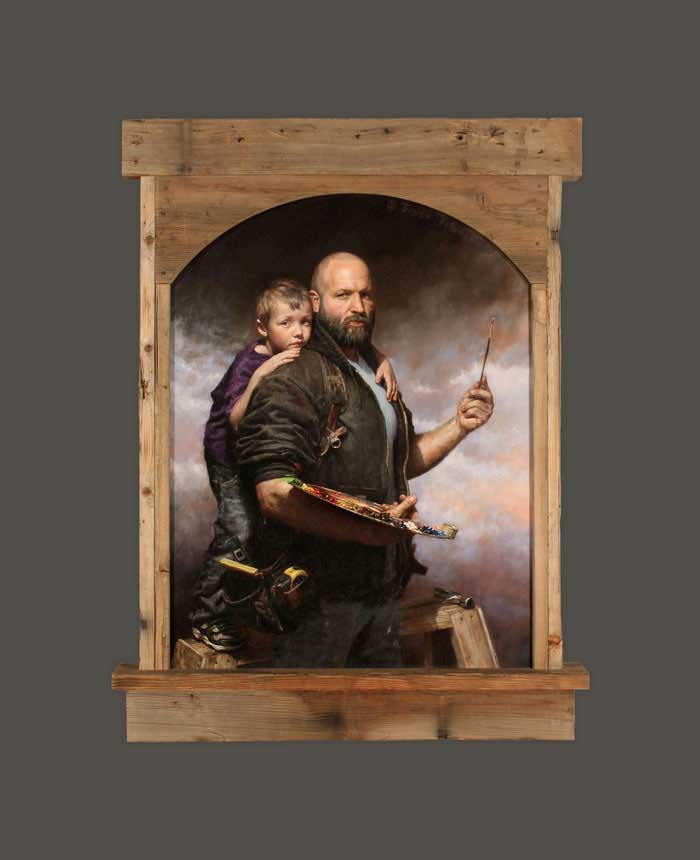Dear Artist,
Back in the dark ages I used to take whole days to stretch canvases or build shipping crates. I rationalized that I needed the exercise and the change of pace.
One day I realized that all I was getting was substandard canvases, shaky crates, and blue fingers. It was really all about avoidance. I saw that I needed to spend more time working up my ideas and performing my art. And in my main focus — those things that I figured I did best — I had to be more efficient.
Creative efficiency powers creative acts. I’ve noticed that artists who develop their own unique efficiencies — time-motion improvements, paint-order expediencies, labour-saving devices — tend to do fresher and more interesting work. Boring art, I notice, is often performed by bored artists who happen to be stuck in one process rut or another. At the risk of leaving out some good ones, here’s a short bombardment of studio efficiencies that you might find useful:
Have your canvases or supports made to your specifications by pros. Carry out dull jobs such as priming and varnishing in assembly-line manner. Give thought to your current processes and habits. Study your workstation for areas of awkwardness and limit them. See that things are handy. Know your tools, their individual wisdom and capabilities. Pre-mix colours when possible and avoid the tedium of re-matching. Use glazes (if appropriate) to tone down, pull together, or to execute otherwise difficult gradations. Use rags, scraping devices, sticks, sponges, etc., to add shorthand variety to your range of effects. Never underestimate the value of sponges — they suck up and they put down. Rethink the order that you normally do things. Cut back on time-wasters — the procedural ones and the two-footed kind. Do your work in a logical and yet creative order. While you’re at it, re-evaluate your workplace furnishings. A hard, spring-backed, armless, rolling chair, for example, can lessen position fatigue and other problems. Know that your peculiar efficiencies keep you up front as captain. Creative efficiency hones style.
“What could be?” is my question for all seasons. Here’s another for the studio wall: “Do I have to do this in the same way that I’ve done it previously?”
Best regards,
Robert
PS: “Besides the noble art of getting things done, there is the noble art of leaving things undone. The wisdom of life consists in the elimination of non-essentials.” (Lin Yutang)
Esoterica: Efficiency frees the creative spirit. The idea is to clear the deck for maximum inventive flow. The idea is to make it possible to let go and surrender to the queen-bee syndrome. “You cannot govern the creative impulse; all you can do is eliminate obstacles and smooth the way for it.” (Kimon Nicolaides) “Life is intrinsically, well, boring and dangerous at the same time. At any given moment the floor may open up. Of course, it almost never does; that’s what makes it so boring.” (Edward Gorey)
This letter was originally published as “Creative efficiency” on July 1st, 2005. The Edward Gorey quote has been added for your enjoyment.
[fbcomments url=”http://clicks.robertgenn.com/creative-efficiency.php”]
Featured Workshop: Donna Dickson

You may be interested to know that artists from every state in the USA, every province in Canada, and at least 115 countries worldwide have visited these pages since January 1, 2013.


A Father’s Dream and a Son’s Love oil painting, 48 x 36 inches by Bryce Billings, Granary district of Salt Lake City, Utah, USA, |







